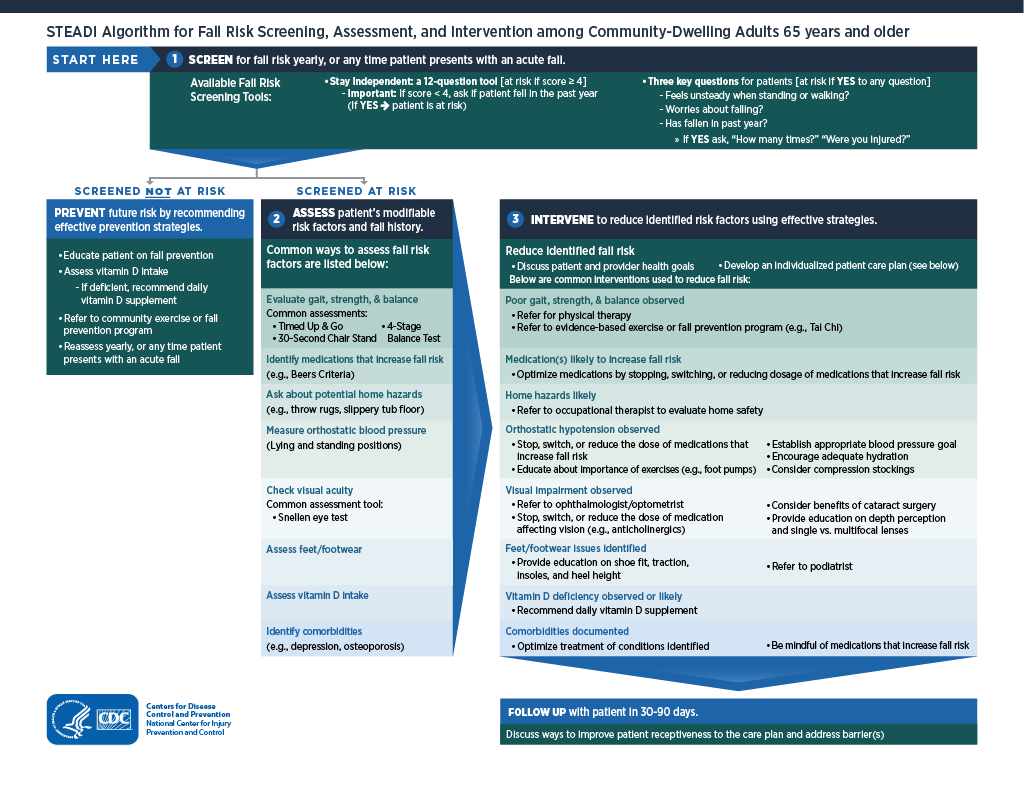
Communities across the nation recently just wrapped trainings and educational initiatives focused on Falls Prevention Awareness thru the National Council on Aging.
The NCOA provides a wealth of resources related to planning falls prevention events and provides tool kits for community engagement and team collaboration.
Integration of an entire interdisciplinary approach is interwoven throughout their programming including recommendations for below as part of prevention fairs:
- An occupational therapist or occupational therapy students to provide information about home modifications
- A physical therapist or physical therapy students to provide balance screenings
- A pharmacist to review medications and share information on how they can affect the risk of falls
- A local senior center or area agency on aging to connect participants to available resources in the community. They can also help with falls prevention program demonstrations; popular evidence-based falls prevention programs include A Matter of Balance, tai chi, and Bingocize.
After the programming and identification of risks, however, teams can often benefit from further continued initiatives via the CDC Stopping Elderly Accidents Deaths and Injuries (STEADI) program.
CDC’s Injury Center created this initiative for healthcare providers who treat older adults who are at risk of falling, or who may have fallen in the past.
Why is this important?
Falls are a common and serious health threat to adults 65 and older. More than one out of four people 65 and older falls each year, and over 3 million are treated in emergency departments annually for fall injuries.
Of the more than 1 in 4 older adults who fall, more than half of those who fall don’t tell their healthcare provider.
The STEADI Initiative offers a coordinated approach to implementing the American and British Geriatrics Societies’ Clinical Practice Guidelines for fall prevention.
Furthermore, the program is both comprehensive and straightforward with systematic steps for implementation.
STEADI consists of three core elements as outlined in the algorithm below.
- Screen patients for fall risk,
- Assess modifiable risk factors, and
- Intervene to reduce risk by using effective clinical and community strategies.
Combined, these elements can have a substantial impact on reducing falls, improving health outcomes, and reducing healthcare expenditures.

STEADI also includes a suite of tools and resources. These resources include basic information about:
- Falls
- Screening options
- Information on medications linked to falls
- Standardized gait and balance assessment tests
- Online trainings that offer continuing education
Another benefit of this program lies in their educational brochures about fall prevention which are specifically designed for patients and caregivers in easily comprehensible language.
Pull your team together, review the Coordinated Care Plan to Prevent Older Adult Falls and let’s all work together to reduce these risks for those we serve.
STEADI does it … together we can prevent falls, one patient at a time.
Renee Kinder, MS, CCC-SLP, RAC-CT, is Executive Vice President of Clinical Services for Broad River Rehab and a 2019 APEX Award of Excellence winner in the Writing–Regular Departments & Columns category. Additionally, she serves as Gerontology Professional Development Manager for the American Speech Language Hearing Association’s (ASHA) gerontology special interest group, is a member of the University of Kentucky College of Medicine community faculty and is an advisor to the American Medical Association’s Current Procedural Terminology CPT® Editorial Panel. She can be reached at [email protected]
The opinions expressed in McKnight’s Long-Term Care News guest submissions are the author’s and are not necessarily those of McKnight’s Long-Term Care News or its editors.





